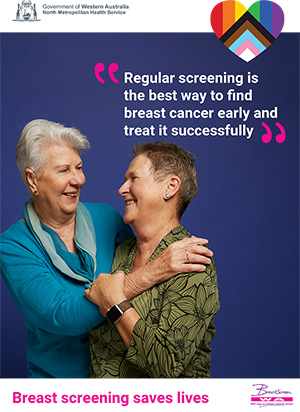.jpg)
It seems hard to believe that a generation has grown up since 9 November 1989. That was the day the world was glued to the television telewitnessing amazing footage of Germans young and old smashing the Berlin Wall with sledgehammers and then dancing the night away on top of what was once the scene of merciless execution for anyone desperate enough to make the run across East Berlin’s No Man’s Land. Massive slabs of concrete were toppled and the East Germans crossed that No Man’s Land into the Neverland of Western consumerism and Germany’s economic might.
For almost fifty years, West Berlin was a haven for alternate lifestylists of every persuasion; their collective creative energy blossomed and generous social benefits collected by residents of the Western city within an Eastern country made for a relatively comfortable life for those uncomfortable elsewhere. Berlin is no longer the enigma it once was, but it is still a special place, especially in June when gay people and their friends celebrate what is known in the German-speaking world as Christopher Street Day and as Gay Pride everywhere else. Berlin’s Christopher Street Day is one of the most vivacious in Europe; all are welcome. Not that the city is devoid of gay life other times of the year. As one of the world’s centres of gay tourism, Berlin attracts men and women from all over the world keen to revel in an openness rivalled by few other places on the planet.
There remain unique aspects to Berlin to remind visitors where they are. First of all, Berlin is a city of parks; there are huge swathes of greenery everywhere, making it one of the most outdoorsy of European capitals. A detour into the enormous Tiergarten will illustrate just how comfortable Germans are with nudity. These people can’t get their clothes off fast enough; in high summer, it’s not unusual to come across nude sunbathers in the parks or find underclad athletes honing their skills in a variety of outdoor activities—and I do mean a variety. The German tradition of outdoorsmanship lives on. And on.
For culture vultures, Berlin’s Museuminsel (Museum Island), one of the world’s highest concentrations of priceless artworks, is a must. Berlin, however, is still a city where art is not merely admired, but also created. A stroll through the funky, up and coming Prenzlauerberg and Friedrichshain neighbourhoods reveals avant-garde art galleries alongside experimental fashion boutiques and well-patronised cafés.
While the future is enticing, the past is not forgotten. Berlin’s cathedral (‘dom’ in German) in the former West Berlin remains un-reconstructed as a reminder of wartime destruction. That bit of rubble seems oddly anachronistic when contemplating Potsdamer Platz, the shiny new city centre where 21st-century Germany comes alive. Here, among the cafés and glass skyscrapers, a sense the optimism still lingers from heady days of post-Wall freedom. A thin brick line across the expansive plaza recalls the location of the Berlin Wall, of which captioned pieces are still left as graffitied memorials to the past. Now that the Wall is gone, everyone wants to see it; the city even provides portable devices called Mauer Guides (Wall Guides) that offer images of the Wall so that visitors can see what it looked like at the exact spot where they are standing at any given moment.
The Potsdamer Platz area is also the location of Grand Hyatt Berlin, where gorgeous staff and atmosphere welcome guests to its Marlene-Dietrich-Platz address. The other female icon of the entertainment world revered in Germany is honoured by the hotel in the form of its simple yet elegant Greta Garbo Suite, in which the highly private actress would no doubt have been very comfortable. As would be expected in a Grand Hyatt, the amenities are superbly laid out and welcoming. For travellers keeping fit on the road, the top-floor Club Olympus is impressively equipped and a treatment at its spa makes an excellent tonic for mornings after if lying out on the sun terrace unpampered is too taxing a proposition.
Very close to the hotel is the subdued gay Holocaust memorial—and no one gay or straight should leave Berlin without visiting the Gay Museum, known in German as the Schwules Museum. Don’t expect to see solid-gold dildos or personalised latex gloves; the Gay Museum’s goal is to show the variety of gay lifestyles and remedy cliché and prejudice. This it does admirably. From our local hairdresser to favourite film stars, we are not always aware of the vast diversity and huge impact gay people have on popular culture and on us as individuals. The museum houses photos, paintings, costumes, books, and other memorabilia depicting aspects of gay life both normal and extraordinary. Don’t miss it. There are also interesting temporary exhibits on display; last year’s inspiring exhibit on the history of lesbian participation in the fight for women’s rights was the first of its kind in Germany—surprising in a country with a female head of state.
Though Berlin is a major city, its flight connections are more local than global. From Perth, two changes of planes are required. Try Scandinavian Airlines’ service to Copenhagen via Bangkok; Berlin is then a short hop away.
www.flysas.com/gay
www.schwulesmuseum.de
www.potsdamerplatz.de/en.html
www.berlin.grand.hyatt.com
www.visitberlin.de/index.en.php
***





